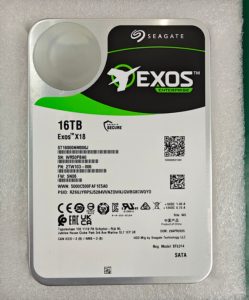In the ever-evolving world of data storage, integrating a new HDD into your system can be a pivotal step for enhancing your storage capacity and performance. This guide will delve into the intricacies of making your PC recognize a new HDD, ensuring a seamless experience for system integrators and IT professionals. Let’s explore the steps and considerations involved in this process.
1. Ensuring Compatibility and Initial Setup
Before making your PC detect a new HDD, it’s crucial to ensure compatibility with your system. Check for the type of interface (SATA, SAS, or NVMe) and the physical form factor (e.g., 2.5″, 3.5″) that your system supports. Once compatibility is confirmed, proceed with the physical installation of the HDD into your system.
For Seagate enterprise-grade HDDs, ensure that the firmware and drivers are up to date. This step is essential for optimal performance and compatibility with your system’s hardware and operating system.
2. Configuring the BIOS/UEFI for New HDD Detection
After the physical installation, the next step is to configure the BIOS/UEFI settings to detect the new HDD. Restart your PC and enter the BIOS/UEFI setup menu, typically accessible by pressing keys like F2, Del, or Esc during startup.
In the BIOS/UEFI menu, navigate to the storage or SATA configuration section. Ensure that the SATA controller is set to AHCI mode for the best performance. You may also need to manually detect the new HDD if it’s not automatically recognized by the system.
3. Partitioning and Formatting the HDD
Once the new HDD is detected, you’ll need to partition and format it to use it for storing data. Use the Disk Management utility in Windows or the Disk Utility in macOS to create partitions and format them to the desired file system (e.g., NTFS, APFS, or ext4).
For enterprise environments, it’s recommended to align partitions to optimize performance, especially with SSDs. This step ensures that the partitions are correctly aligned with the underlying storage hardware, minimizing read/write latency.
4. Optimizing Performance with Seagate’s Advanced Features
Seagate enterprise-grade HDDs come with advanced features that can be leveraged to optimize performance. For instance, the Seagate Secure technology provides hardware-based encryption, enhancing data security without impacting performance.
Additionally, features like PowerChoice technology allow for energy-efficient operation, which is crucial in data centers and large-scale storage environments. Make sure to explore and configure these features as per your organization’s requirements.
5. Best Practices for Maintenance and Support
Maintenance is a critical aspect of ensuring the long-term reliability and performance of your HDDs. Regularly monitor the health of your HDDs using tools like CrystalDiskInfo, which can provide insights into drive health and predict potential failures.
In case of any issues, having access to reliable support and warranty services is essential. As a Seagate enterprise-grade HDD distributor, HUAYI INTERNATIONAL LIMITED offers comprehensive support, including 3-year warranties and secure transaction processes.
When it comes to bulk purchasing of HDDs, working with a trusted and experienced distributor like HUAYI INTERNATIONAL LIMITED offers several advantages. Our association with Seagate ensures that you receive genuine, high-quality HDDs, backed by robust after-sales support. We offer competitive pricing, secure transactions, stable supply chains, and comprehensive warranty coverage, making us the ideal choice for your enterprise storage needs.
In conclusion, integrating a new HDD into your system requires careful planning and execution. By following the steps outlined in this guide and leveraging the advanced features of Seagate enterprise-grade HDDs, you can ensure optimal performance and reliability. For all your bulk HDD procurement needs, trust HUAYI INTERNATIONAL LIMITED to deliver the best solutions and support.




